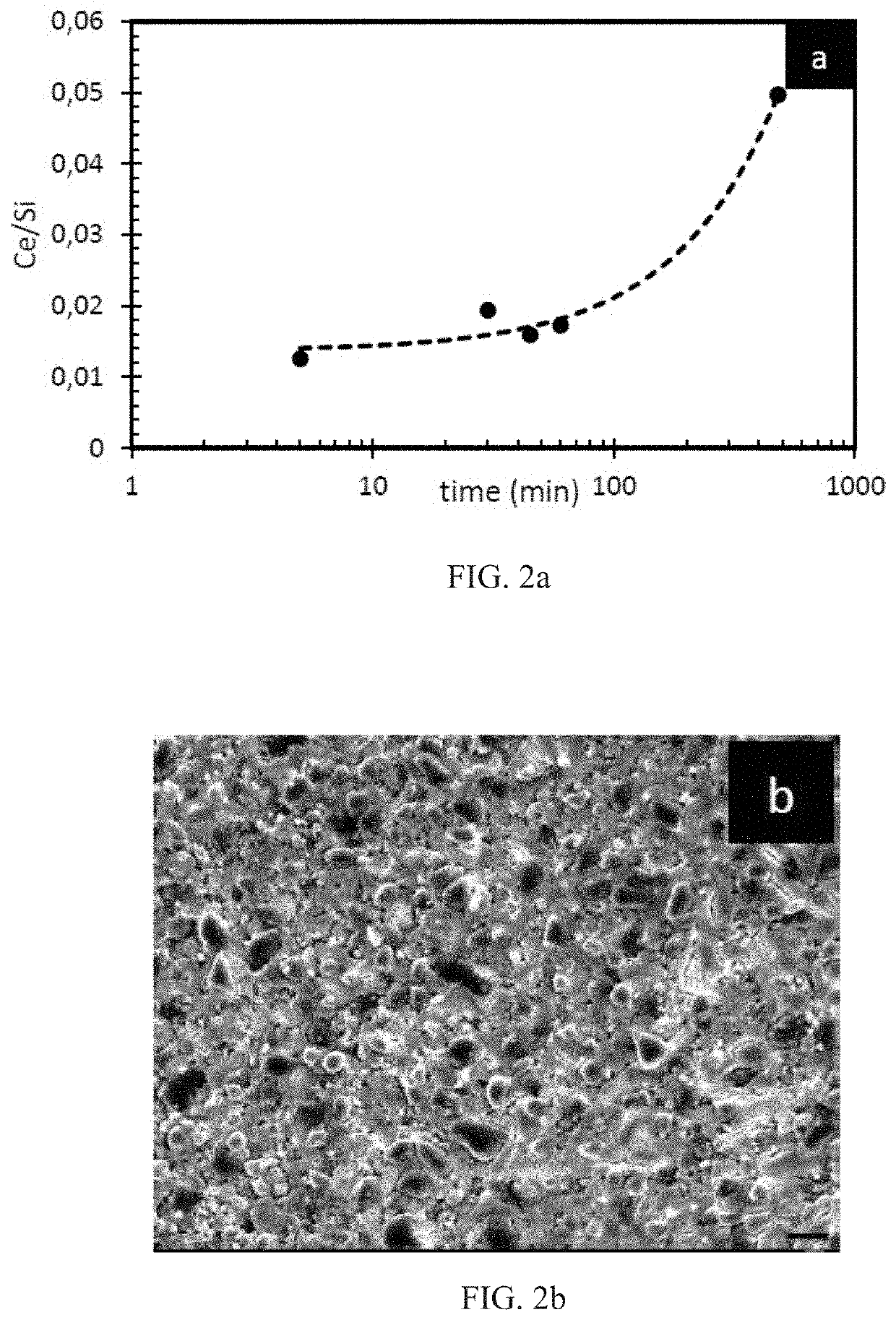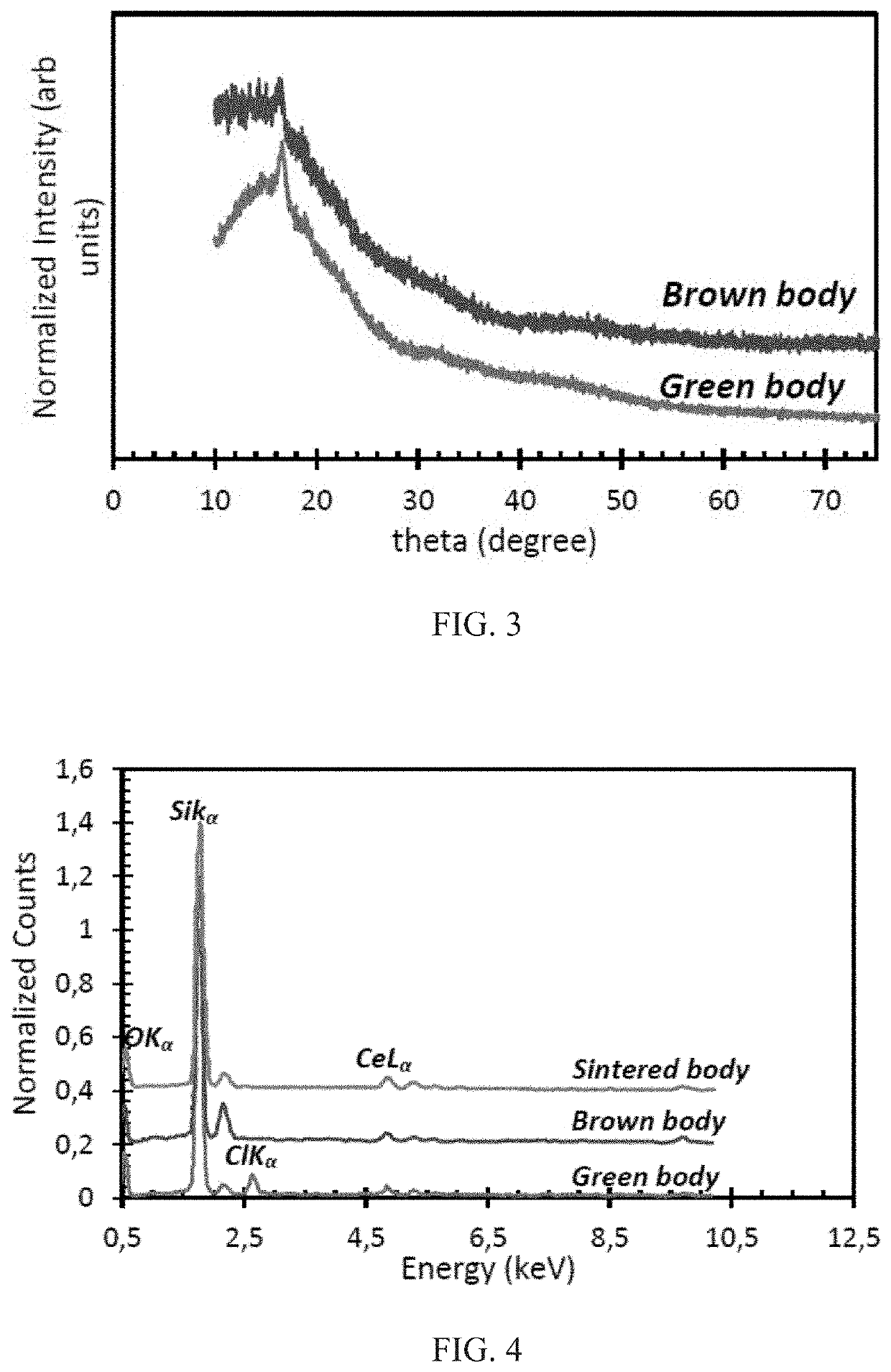Glass scintillators and methods of manufacturing the same
a technology of glass scintillators and manufacturing methods, applied in the direction of additive manufacturing processes, manufacturing tools, instruments, etc., can solve the problems of more complex fabrication process, and achieve the effect of reducing or improving homogeneity of dopant, and eliminating the need for reducing atmospher
- Summary
- Abstract
- Description
- Claims
- Application Information
AI Technical Summary
Benefits of technology
Problems solved by technology
Method used
Image
Examples
example 1
Materials
[0032]Acrylate based resins were selected because of their compatibility with stereolithography. They exhibit minimal moisture inhibition during processing and have a fast curing rate compared to other resins such as epoxies. For the synthesized silica, tetraethyl orthosilicate (TEOS) (Si(OC2H5)4) (Millipore Aldrich Inc) was used as a precursor, and borosilicate particles (20 μm) were supplied by Corning Inc. For doping and applications, cerium III chloride (CeCl3) (Fischer Scientific Inc), cerium III acetate (Fischer Scientific Inc) and magnesium acrylate salts (Alfer Aesar Inc) were used as purchased. Hydrochloric acid, acetone, and ethanol solvents were purchased from Milllipore Aldrich, Alfa Aesar, and Millipore Aldrich, respectively.
3D Printing
[0033]The matrix and filler components of the liquid glass composite were mixed and then dispersed with a stirrer to allow for complete homogenization. The resulting sludge was then degassed using a lab made rotary vacuum pump an...
PUM
| Property | Measurement | Unit |
|---|---|---|
| temperature | aaaaa | aaaaa |
| softening temperature | aaaaa | aaaaa |
| softening temperature | aaaaa | aaaaa |
Abstract
Description
Claims
Application Information
 Login to view more
Login to view more - R&D Engineer
- R&D Manager
- IP Professional
- Industry Leading Data Capabilities
- Powerful AI technology
- Patent DNA Extraction
Browse by: Latest US Patents, China's latest patents, Technical Efficacy Thesaurus, Application Domain, Technology Topic.
© 2024 PatSnap. All rights reserved.Legal|Privacy policy|Modern Slavery Act Transparency Statement|Sitemap



